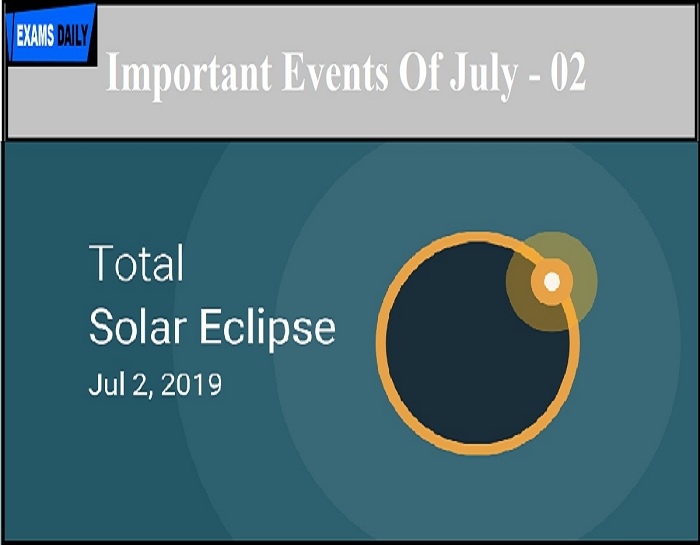Maylswamy Annadurai Birth Day
Birth:
- He was born on July 2,1958 in TamilNadu.

Honours:
- He is an engineer from Tamil Nadu. He joined ISRO in 1982.
- He is a Distinguished scientist with the Indian Space Research Organisation and currently serves as Director ISRO Satellite Centre(ISAC).
- He was the project director of the Chandrayaan-1 project, which first sent to India for the moon.
- Annadurai was listed among 100 Global thinkers of 2014 and topped the innovators list.
- Annadurai writes a regular column “Kaiyarugey Sevvai”(Mars is at our Reach) in the Tamil Daily Dina Thanthi.
- Annadurai and his works are mentioned in 10th standard Science Text Book of Tamil Nadu.
- Annadurai has been given five doctoral titles so far.
- He is called young Kalam.
- To guide the current youth he has authored a book entitled “Kaiyarugey Nila” which includes his early days and Chandraayan’s work.
- It is a historic event that has led to nearly 3000 Indian and international scientists.
- ‘Growing Science’ is an honorary teacher of science magazine in Tamil.
- He is the Director of the Satellite Space Center of the Indian Space Research Organization.
Awards:
Mayilasamy Annadurai has received more than fifty prizes.
- Padma Shri, 2016, one of the highest civilian awards in India
- The government of Karnataka awarded him the Rajyotsava Prashasti for Science-2008.
- Sir C.V Raman Award-2010 from Periyar University, Salem
- Annadurai is the recipient of the Hariom Ashram pretit Vikram Sarabhai Research Award for his outstanding Contributions to Systems analysis and Space systems management-2004.
- He is also the recipient of a citation from ISRO for his contribution to the INSAT systems Mission management 2003.
- Team Excellence award for his contribution to Indian Space Program-2007.
- ISRO Merit Award 2009
- Team Excellence Award 2010 as team leader of Chandrayaan-1 team
- ISRO Outstanding Achievement award -2014.
- Laurels for Team Achievement Chandrayaan-1, International Academy of Astronautics,2013, Beijing China
- Certificate of Appreciation from Boeing Asian – American professional Association, Houston, USA
- Space Systems award, 2009 from American Institute of Aeronautics and Astronautics, US.
- National Aeronautical Award-2008 from Aeronautical Society of India in recognition of his contributions in the field of Satellites/Spacecrafts.
- Kongu Achiever Award 2009 From NIA Trust, Pollachi.
Events
- 1698 – Thomas Savery patents the first steam engine.
- 1853 – The Russian Army crossed the Pruth river into the Danubian Principalities Moldavia and Wallachia—providing the spark that set off the Crimean War.
- 1966 – The French military explodes a nuclear test bomb code-named Aldébaran in Moruroa their first nuclear test in the Pacific.
- 2004 – Pakistan joined the ASEAN organization.
- 1578 – Martin Propscher found Canada’s Puffin Island.
Births
- 1862 – William Henry Bragg, English physicist, chemist, and mathematician, Nobel Prize laureate
- 1877 – Hermann Hesse-German born Swiss poet, novelist, and painter, Nobel Prize laureate
- 1925 – Patrice Lumumba, Congolese politician and 1st Prime Minister of the Democratic Republic of the Congo
- 1946 – Richard Axel -American neuroscientist and biologist, Nobel Prize laureate
Deaths
- 1961 – Ernest Hemingway, American novelist, short story writer, and journalist, Nobel Prize laureate
- 2013 – Douglas Engelbart, American computer scientist, invented the computer mouse
1757 – Chiraj Ud Tawla is the last Nawab of Bengal
Solar eclipse
- A total solar eclipse will occur at the Moon’s ascending node of the orbit on July 2, 2019 with a magnitude of 1.0459. A solar eclipse occurs when the Moon passes between Earth and the Sun, thereby totally or partly obscuring the image of the Sun for a viewer on Earth. A total solar eclipse occurs when the Moon’s apparent diameter is larger than the Sun’s, blocking all direct sunlight, turning day into darkness. Totality occurs in a narrow path across Earth’s surface, with the partial solar eclipse visible over a surrounding region thousands of kilometres wide.
- Totality will be visible from the southern Pacific Ocean east of New Zealand to the Coquimbo Region in Chileand Argentina at sunset, with the maximum of 4 minutes 32 seconds visible from the Pacific Ocean. Following the North American solar eclipse of August 21, 2017, Astronomers Without Borders collected eclipse glasses for redistribution to Latin America and Asia for their 2019 eclipses. A total solar eclipse will cross this region on December 14, 2020 just 531 days later.

